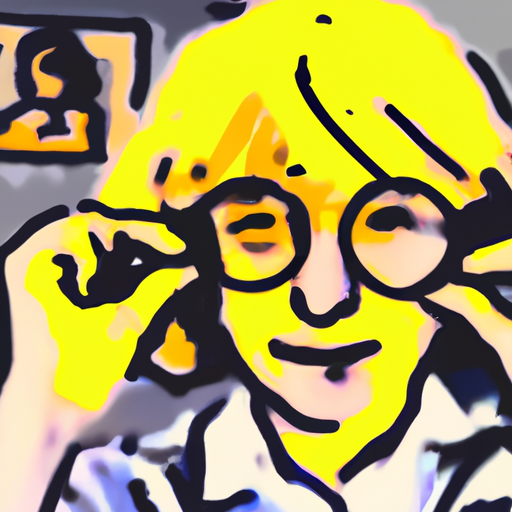
-
Table of Contents
- Drawing from Expressionism: Emotional Design Palette
- Understanding Expressionism
- Applying Expressionism to Design
- 1. Bold and Exaggerated Forms
- 2. Vibrant Colors
- 3. Distorted Perspectives
- Case Studies: Emotional Design in Action
- 1. Airbnb
- 2. Apple
- The Impact of Emotional Design
- Key Takeaways
- In Conclusion
Drawing from Expressionism: Emotional Design Palette

Design is not just about aesthetics; it is about evoking emotions and creating meaningful experiences. One artistic movement that has greatly influenced the world of design is Expressionism. Originating in the early 20th century, Expressionism sought to convey the inner emotions and subjective experiences of the artist. This article explores how designers can draw from Expressionism to create an emotional design palette that resonates with users.
Understanding Expressionism
Expressionism emerged as a response to the industrialization and urbanization of society, which left many feeling disconnected from their emotions and the natural world. Artists sought to express their inner turmoil, anxieties, and desires through their work. The movement rejected the objective representation of reality and instead focused on subjective experiences and emotions.
Expressionist artists used bold and exaggerated forms, vibrant colors, and distorted perspectives to convey their emotional states. They aimed to evoke a visceral response from the viewer, to make them feel something deeply. This approach to art has had a profound impact on various fields, including design.
Applying Expressionism to Design
Designers can draw inspiration from Expressionism to create emotionally engaging experiences for users. By incorporating the following elements into their designs, they can tap into the power of emotions:
1. Bold and Exaggerated Forms
Expressionist art often features bold and exaggerated forms that distort reality. Designers can apply this principle by using unconventional shapes and proportions in their designs. For example, a website could have a navigation menu with irregularly shaped buttons or a product packaging could have a unique and eye-catching form. These bold forms can create a sense of intrigue and capture the user’s attention.
2. Vibrant Colors
Color plays a crucial role in evoking emotions. Expressionist artists used vibrant and intense colors to convey their inner states. Designers can use a similar approach by incorporating bold and saturated colors into their designs. For instance, a mobile app could use a vibrant color scheme to create a sense of energy and excitement, while a website for a relaxation spa could use calming and soothing colors to evoke a sense of tranquility.
3. Distorted Perspectives
Expressionist artists often depicted scenes from unusual angles or with distorted perspectives to convey a sense of unease or disorientation. Designers can apply this technique by playing with perspective in their designs. For example, a website could use a tilted or skewed layout to create a sense of dynamism or a product packaging could feature a distorted image to create intrigue and capture the user’s curiosity.
Case Studies: Emotional Design in Action
Let’s explore some real-world examples of how designers have successfully incorporated emotional design principles inspired by Expressionism:
1. Airbnb
Airbnb, the popular online marketplace for lodging, has embraced emotional design to create a sense of belonging and adventure. The company’s website and app feature vibrant colors, bold typography, and captivating imagery that evoke a sense of excitement and wanderlust. By tapping into the emotions associated with travel and exploration, Airbnb has created a compelling user experience that resonates with its users.
2. Apple
Apple is renowned for its sleek and minimalist designs, but the company also incorporates emotional design principles inspired by Expressionism. For example, the iPhone’s user interface uses bold and exaggerated forms, such as large icons and rounded corners, to create a sense of playfulness and approachability. Additionally, Apple’s marketing campaigns often evoke emotions through storytelling and captivating visuals, creating a strong emotional connection with its audience.
The Impact of Emotional Design
Emotional design has a profound impact on user engagement and satisfaction. When users feel an emotional connection with a product or experience, they are more likely to form a positive perception and develop brand loyalty. According to a study by the Design Management Institute, companies that prioritize design outperform their competitors by a significant margin. Emotional design plays a crucial role in creating memorable and meaningful experiences that drive customer loyalty and advocacy.
Key Takeaways
- Expressionism, an artistic movement focused on conveying emotions, can inspire designers to create emotionally engaging experiences.
- Designers can draw from Expressionism by incorporating bold and exaggerated forms, vibrant colors, and distorted perspectives into their designs.
- Real-world examples, such as Airbnb and Apple, demonstrate the successful application of emotional design principles.
- Emotional design has a significant impact on user engagement, satisfaction, and brand loyalty.
In Conclusion
Design is not just about aesthetics; it is about evoking emotions and creating meaningful experiences. Drawing from Expressionism, designers can tap into the power of emotions to create compelling and engaging designs. By incorporating bold and exaggerated forms, vibrant colors, and distorted perspectives, designers can create experiences that resonate with users on a deep emotional level. Emotional design has the potential to drive customer loyalty and advocacy, making it a powerful tool for businesses in today’s competitive landscape.
